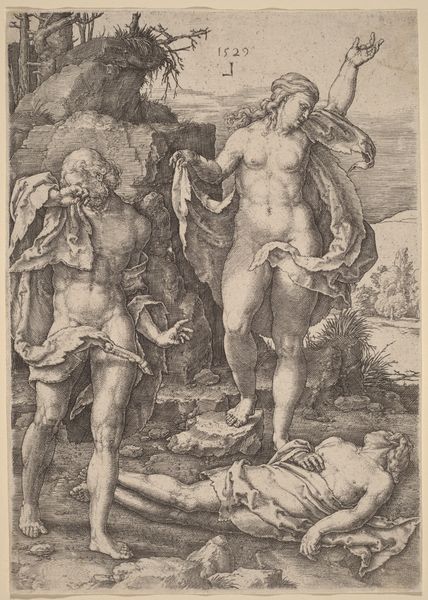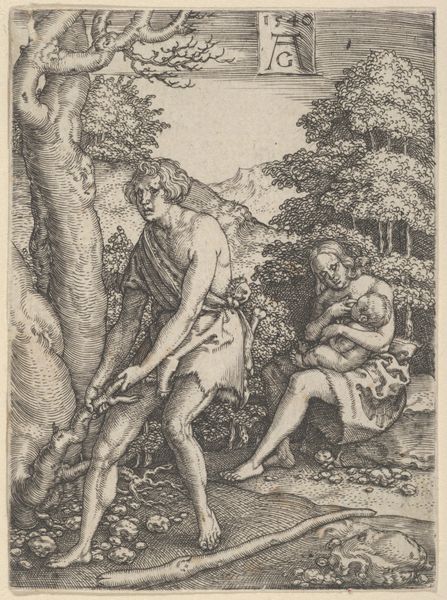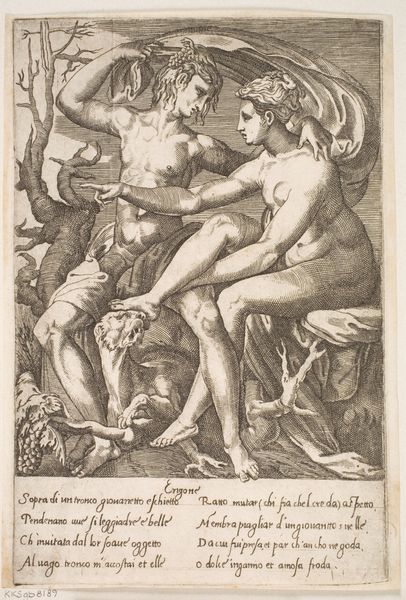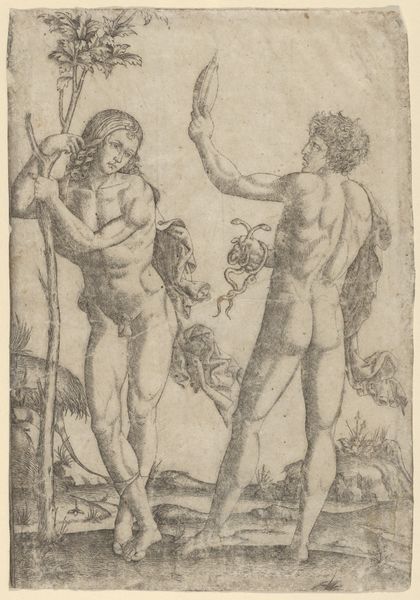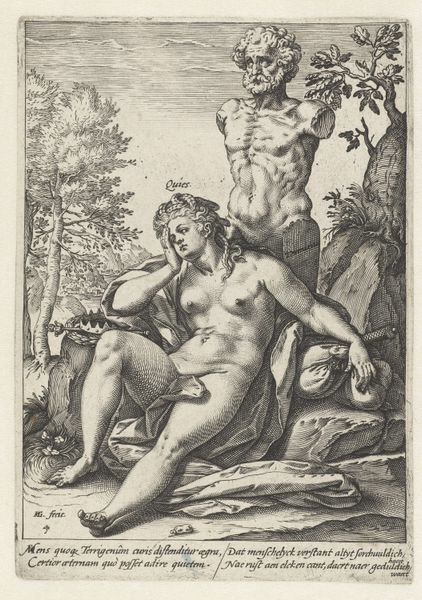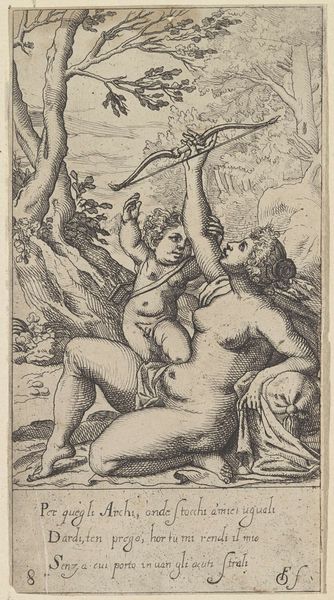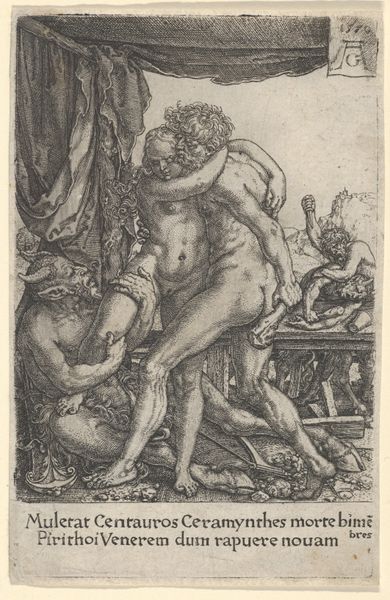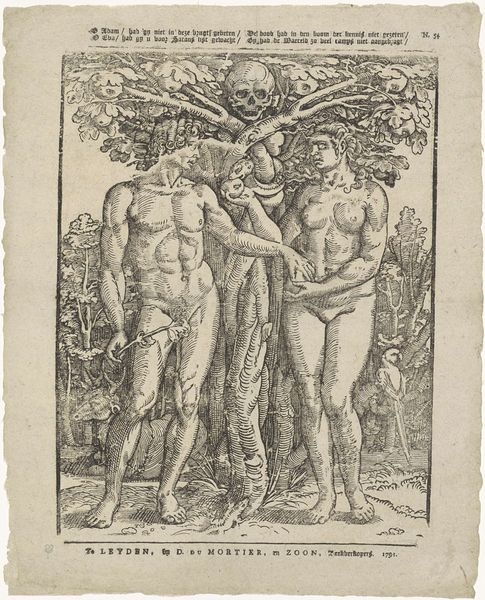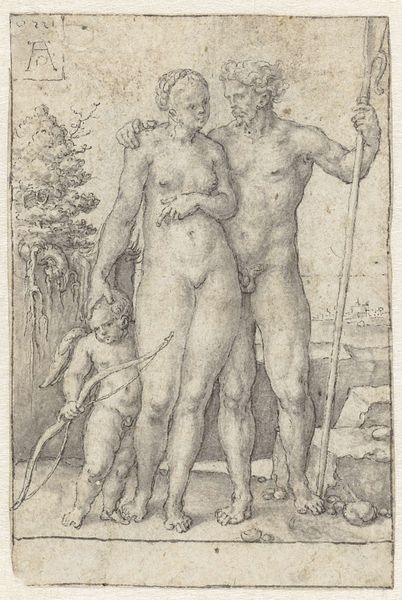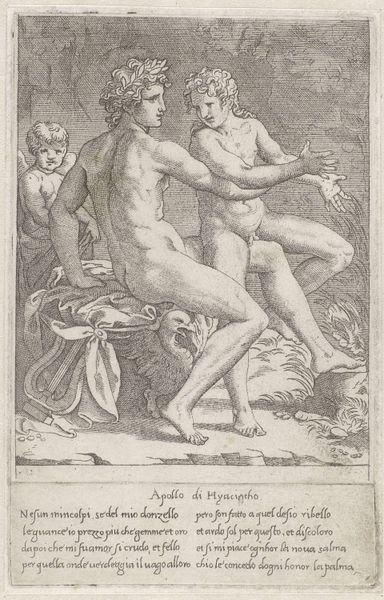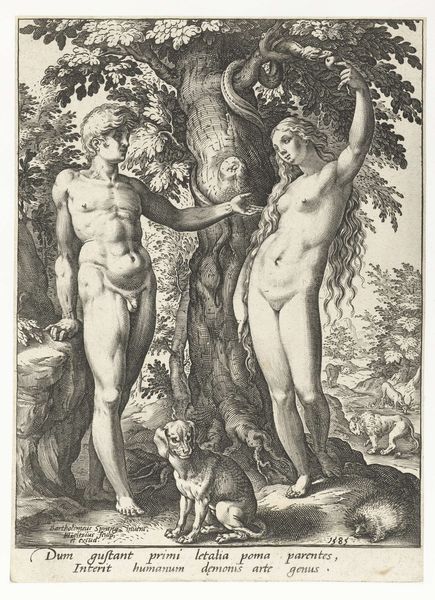
drawing, print, engraving
#
drawing
# print
#
landscape
#
figuration
#
female-nude
#
history-painting
#
northern-renaissance
#
engraving
#
male-nude
Dimensions: sheet: 6 3/8 x 4 5/8 in. (16.2 x 11.7 cm)
Copyright: Public Domain
Curator: This is Lucas van Leyden's "Fall of Man," an engraving from 1529. It's a fairly small piece, a testament to the meticulous craft of the Northern Renaissance printmakers. Editor: The high contrast immediately grabs me. The stark figures pop against the delicate landscape, creating a charged atmosphere. Almost unsettling. Curator: Unsettling, yes, and I find that partially stems from the distribution of light and shadow. Notice how van Leyden uses cross-hatching to define the musculature of Adam and Eve, almost hyper-realistically. It emphasizes their physical presence and the vulnerability of their nakedness. Editor: The apple is, of course, loaded. It's not just a piece of fruit, but the emblem of transgression, and Eve's presentation of it is far from innocent. It speaks to a broader questioning of faith that bubbled up in Northern Europe during the Reformation. Curator: Exactly! The serpent, subtly coiled in the tree, and Eve's direct gaze outwards implicate us, the viewers, in this pivotal moment of human history. And the background, that tranquil yet subtly foreboding landscape... it sets a stage where nature itself becomes complicit. Editor: Consider too, that van Leyden chose to render this scene as an engraving, making it accessible to a wide audience. He's actively participating in a visual dialogue about religious dogma, prompting viewers to engage critically with established narratives. These nude bodies represent so much more than their initial state. Curator: I agree. And though relatively compact, it reflects the dynamism of form found throughout van Leyden’s oeuvre, with this work capturing a moment rife with tension. His skill is evident in the handling of light, and in how the details of nature surround and become part of these charged figures. Editor: Yes, it's a piece that reminds us how the power of visual symbolism can turn an image into a lasting mirror, always ready to reflect our ever-changing interpretations of right and wrong.
Comments
No comments
Be the first to comment and join the conversation on the ultimate creative platform.

